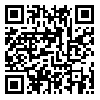Volume 10, Issue 1 (2019)
LRR 2019, 10(1): 251-266 |
Back to browse issues page
Download citation:
BibTeX | RIS | EndNote | Medlars | ProCite | Reference Manager | RefWorks
Send citation to:



BibTeX | RIS | EndNote | Medlars | ProCite | Reference Manager | RefWorks
Send citation to:
Ahmadi M, Mohammadi M R, Nazary F. The Case in Persian and Russian and Its difficulties for Persian Speakers. LRR 2019; 10 (1) :251-266
URL: http://lrr.modares.ac.ir/article-14-16576-en.html
URL: http://lrr.modares.ac.ir/article-14-16576-en.html
1- Associate Professor of Russian Language – Tarbiat Modares University – Tehran –Iran
2- Ph.D. Candidate in Russian Language- Tarbiat Modares University – Tehran –Iran.
2- Ph.D. Candidate in Russian Language- Tarbiat Modares University – Tehran –Iran.
Abstract: (7665 Views)
In order to become a fully competent speaker of a language one needs to acquire the phonology, develop a lexicon, learn how to inflect verbs and noun phrases, or learn how to build sentences. However, in order to be able to communicate smoothly and efficiently with other speakers, individuals also have to learn how to organize the information they want to convey in such a way that the message will be well understood by their interlocutors. One of the most important aspects of information structure is information status, which is, the marking of discourse referents as new or given. Most studies of information status marking have mostly concentrated on morpho-syntactic means, in particular the use of definite and indefinite noun phrases. Considerably less research has been concerned with the realization of intonational means. Research suggests that there may be a direct mapping between information status and certain types of pitch accents. The research also indicated that the pitch accent type used to mark accessible referents is like that used to accent given referents. The goal of the present study was to investigate the different pitch accent patterns used to mark different information status (new, given, accessible and identifiable) in the narrative discourse of the monolingual Persian- speaking adults. Moreover, since no research has been done on the intonational patterns of accessible and identifiable referents in Persian, pitch accent and intonational pattern of these referents were also investigated. To these aims, 10 monolingual Persian-speaking adults were encouraged to narrate stories based on 8 picture stories in which information status of referents were carefully controlled. The stories were labeled to determine whether they included target words, full NP, pronouns. The subjects’ pitch accent patterns were identified using Praat software. Findings of the study revealed that the most frequent accent types used to mark new, given and accessible referents were L+(H*) H+(L*) and H*+L respectively. It was also found out that there was no specific accent type to mark identifiable referents in Persian. Based on the results, it could be suggested that there was a specific relationship between information status and pitch accent types in the subjects’ narrative discourse.
| Rights and permissions | |
 |
This work is licensed under a Creative Commons Attribution-NonCommercial 4.0 International License. |







